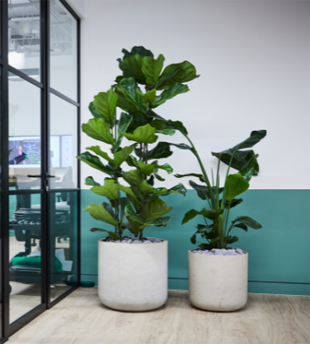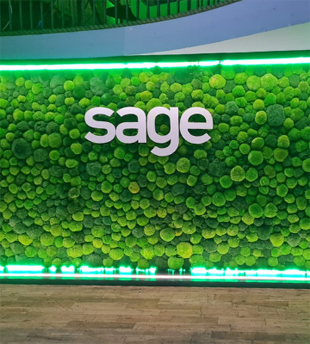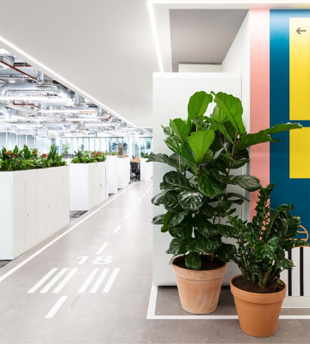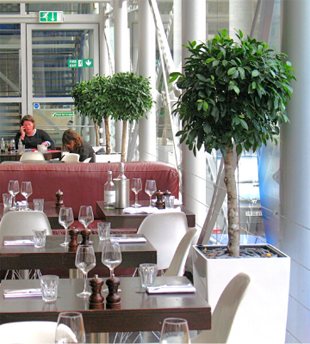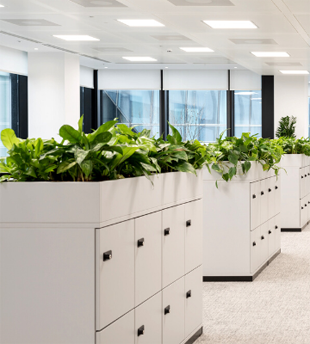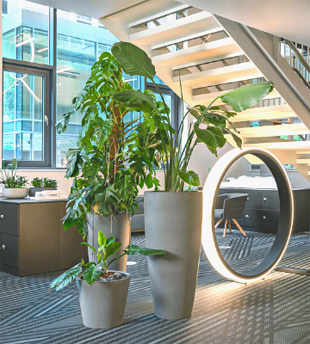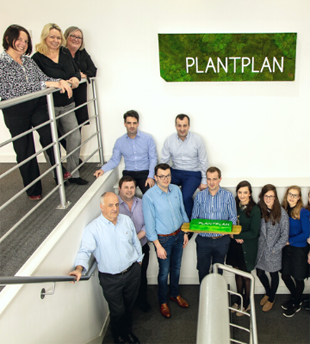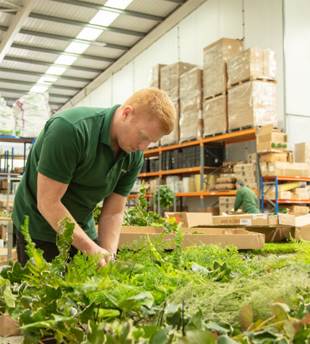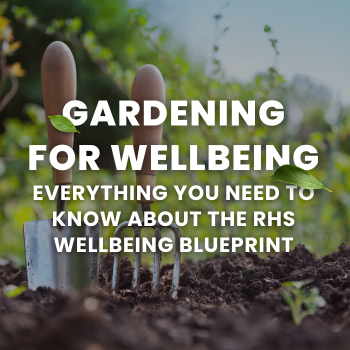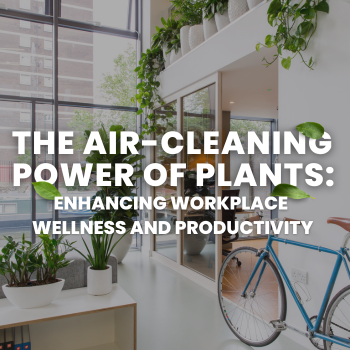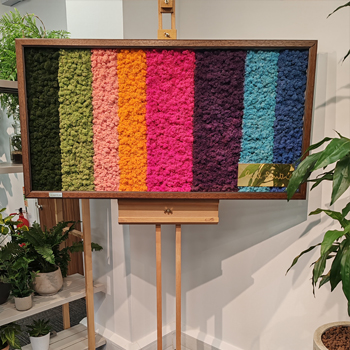Toggle Nav
Green Walls In The Workplace & Their Benefits
The Benefits of Green Walls in the Workplace
Green Walls in the workplace, blending nature and architectural design, are fast becoming a staple in modern office environments. Offering more than just a visual upgrade, these vertical gardens play an important role in promoting workplace well-being and sustainability. Whether it's the lush vibrancy of living plants or the maintenance-free appeal of artificial alternatives, green walls are transforming workspaces into healthier, more inviting places.
In this article, we explore the extensive benefits of green walls in the workplace. From air purification to boosting employee morale, these benefits are testament to our natural desire to be close to nature, known as biophilia. We’ll also take a look at how green walls align with WELL and BREEAM certification standards, which promote health and well-being in buildings.
Whether you are intrigued by the prospect of breathing life into your office space or are curious about the sustainability impacts of such installations, read on as we showcase how these structures can be so much more than just a backdrop in the workplace.
Environmental and Wellness Benefits of Green Walls
Green walls in the workplace offer a dual advantage by improving both the environmental quality and the wellness of office spaces. Here, we distinguish between three types of green walls: living walls, moss walls, and replica walls, each offering unique benefits:
- Living Walls: Comprised of live plants, living walls are adept at purifying indoor air, removing toxins, and enhancing oxygen levels. This creates a healthier environment for employees, potentially reducing sickness and boosting cognitive function.
- Moss Walls: Utilising preserved moss, these walls provide a green aesthetic without the upkeep required by living walls. While they don't purify air, their presence is linked to reduced stress levels, promoting well-being among staff.
- Replica Walls: These walls mimic the look of real plants or moss but require no maintenance. Ideal for areas with low natural light or where upkeep is a concern, they still offer the psychological benefits of greenery.
The presence of indoor greenery has been associated with significant reductions in stress levels, fostering increased well-being among employees. Research shows that office plants could improve staff well-being by up to 47%, proving the tangible benefits of integrating green walls into workplace design.
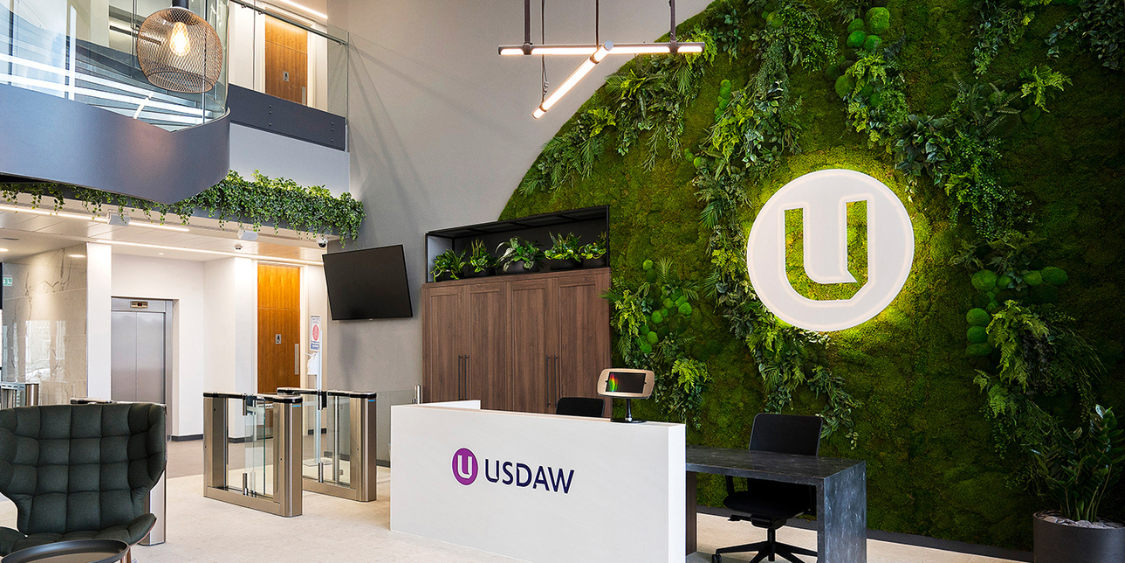

Living Walls and WELL and BREEAM Certification
The integration of living walls into office spaces plays a key role in achieving both WELL and BREEAM certifications, each setting standards for health, well-being, and sustainability in buildings. WELL Certification, developed by the International WELL Building Institute, focuses on enhancing human health and well-being across various building aspects, from air quality to community. On the other hand, BREEAM (Building Research Establishment Environmental Assessment Method) emphasises environmental, social, and economic sustainability, assessing performance in areas such as energy use, health, and well-being.
10 Steps Towards WELL Certification:
- When working towards WELL Certification, companies can follow these strategic steps:
- Enhance Air Quality: Integrate living green walls to purify indoor air.
- Promote Hydration: Ensure easy access to clean, filtered water.
- Offer Nutritious Foods: Provide healthy eating options within the office.
- Optimise Lighting: Utilise natural light and implement circadian lighting systems.
- Encourage Movement: Design spaces that invite physical activity.
- Maintain Thermal Comfort: Regulate indoor temperatures for comfort.
- Improve Acoustic Environment: Use green walls for sound insulation.
- Select Safe Materials: Choose non-toxic materials for office interiors.
- Support Mental Well-being: Create spaces that reduce stress and enhance productivity.
- Foster Community: Develop areas that encourage social interaction.
These steps not only contribute to achieving WELL Certification but also significantly enhance the overall well-being and productivity of the workplace environment.
For more detailed insights into how to achieve WELL Certification, visit the official WELL v2 overview page.
10 Steps Towards BREEAM Certification:
- Living green walls also support the attainment of BREEAM certification by addressing these key areas:
- Energy Efficiency: Incorporate green walls to improve building insulation, reducing energy consumption for heating and cooling.
- Health and Well-being: Enhance indoor air quality and employee well-being through the biophilic design of living walls.
- Water Use: Employ efficient irrigation systems for living walls to minimise water usage.
- Materials: Use sustainable and locally sourced materials for the installation of green walls to reduce environmental impact.
- Waste Reduction: Implement a waste management plan for the maintenance of living walls to minimise waste production.
- Land Use and Ecology: Contribute to biodiversity by incorporating a variety of plant species in green wall installations.
- Pollution: Reduce the need for chemical air fresheners or purifiers by using living walls as natural air purifiers.
- Transport: Consider the logistics of maintaining living walls, opting for suppliers who adhere to sustainable transport practices.
- Management: Demonstrate effective management of building resources and maintenance practices, including the care of living walls.
- Innovation: Utilise innovative technologies in the design and maintenance of living walls to earn credits under BREEAM’s innovation category.
Adhering to these steps tailored to WELL and BREEAM standards not only assists in acquiring these certifications but also enhances the overall sustainability and productivity of the workplace. Through the strategic deployment of living green walls, organisations can create healthier, more engaging, and environmentally responsible work environments.
Choosing Between Living, Moss and Replica Walls
Deciding between living, moss, and replica green walls in the workplace involves evaluating several factors to work out which option aligns best with your requirements, aesthetic preferences, maintenance capacity, and sustainability goals.
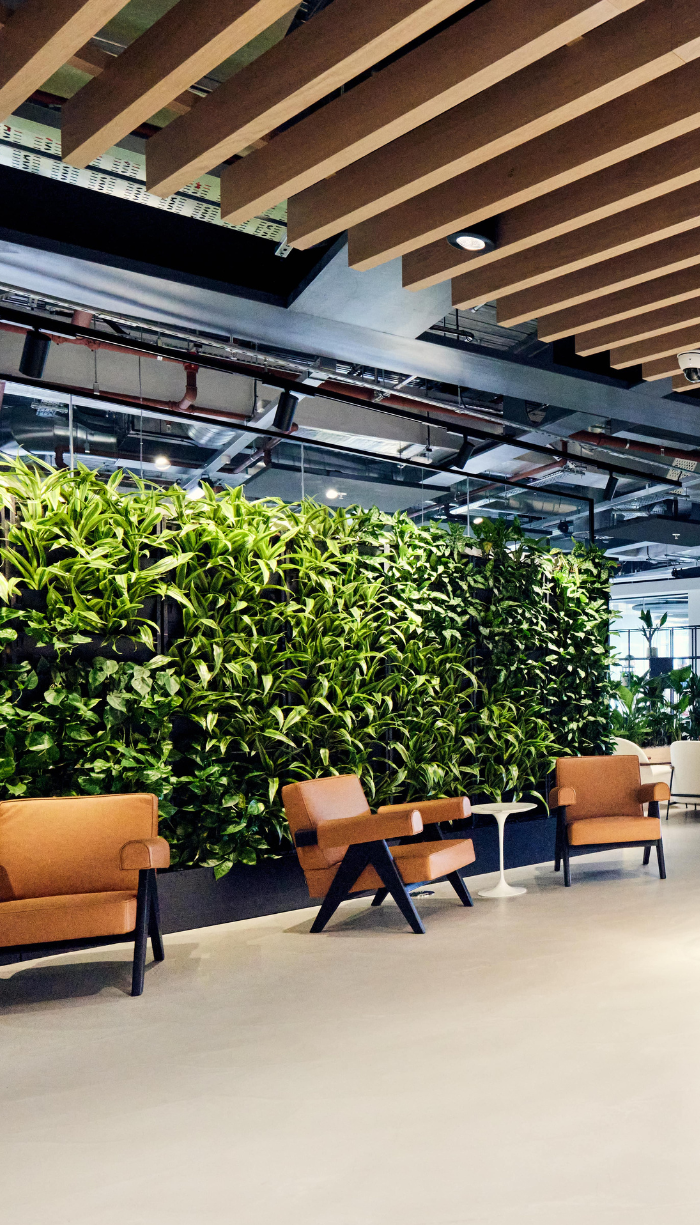

A Quick Guide To Living Walls:
- Air Purification & Humidity: Effectively enhance indoor air quality and regulate humidity through natural processes.
- Wellness & Aesthetics: Promote stress reduction and increase productivity with their vibrant, natural appearance.
- Installation: Installation can be extensive, often requiring a day or more, due to the complexity of integrating a living system.
- Environmental Impact: Positively impact the environment by absorbing pollutants and carbon dioxide.
- Maintenance Needs: Require consistent care, including adequate lighting, watering, and nutrient provision.
- Cost & Durability: Tend to have higher initial setup and ongoing maintenance costs. Durability may vary based on plant choice and environmental conditions.
- Certification Contribution: Can significantly contribute to achieving WELL and BREEAM certifications by improving air quality and enhancing well-being.
A Quick Guide To Moss Walls:
- Wellness & Aesthetics: Offer unique aesthetic and stress reduction benefits, contributing to a serene office atmosphere.
- Installation: Relatively quick and straightforward, as they do not require a complex system for maintenance.
- Maintenance Needs: Virtually maintenance-free post-installation, needing no light, water, or nutrients.
- Environmental Impact: Enhance visual appeal with minimal environmental footprint, as they do not require water, light, or maintenance.
- Cost & Durability: Generally, offer a cost-effective alternative with low maintenance expenses and high durability. Suitable for various settings.
- Certification Contribution: While they don’t contribute to air quality improvements, moss walls can support WELL and BREEAM principles by enhancing mental well-being and interior aesthetics.
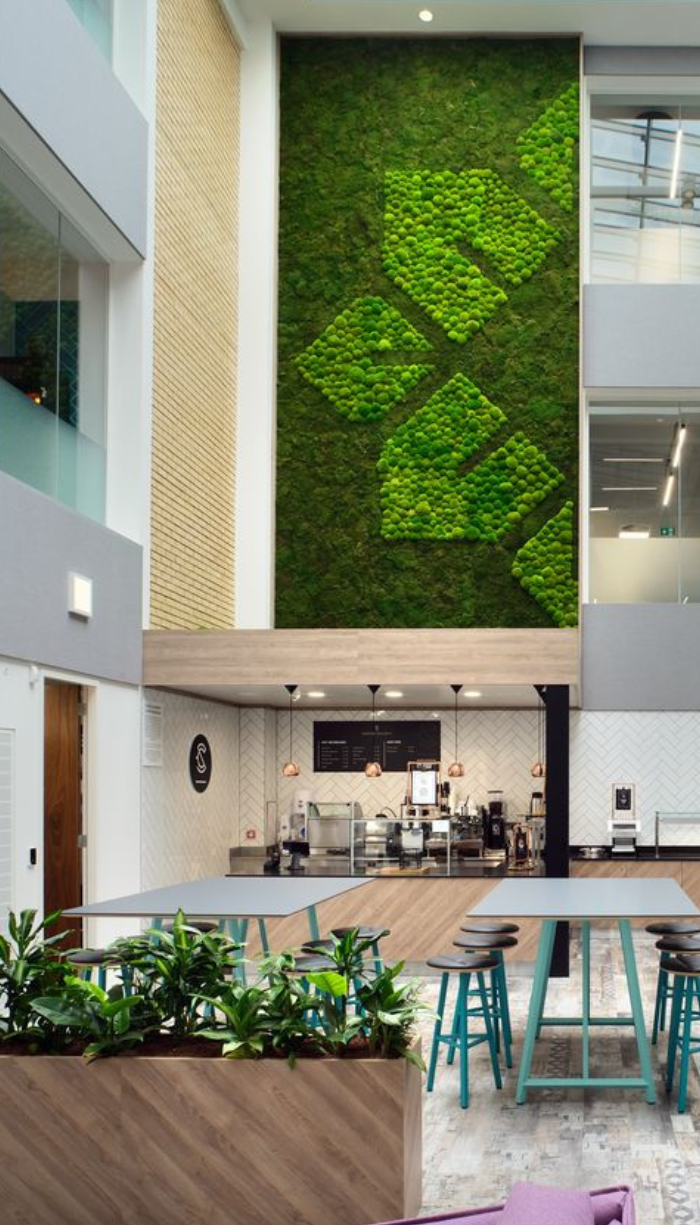

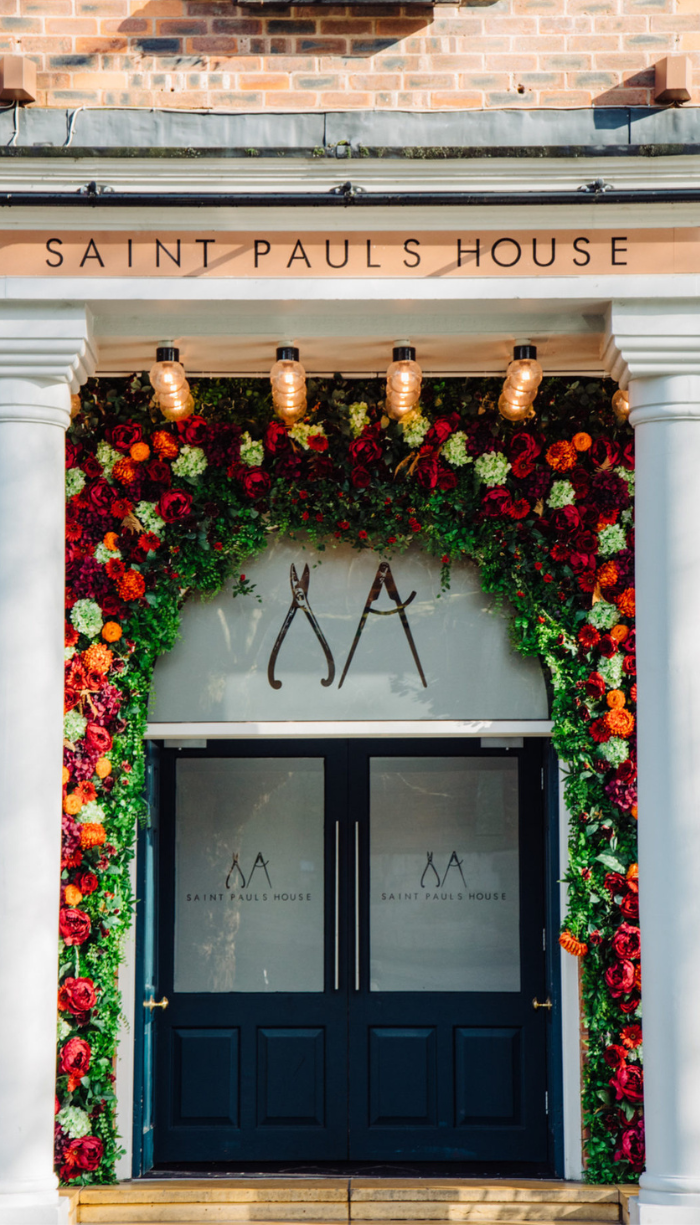

A Quick Guide To Replica Green Walls:
- Aesthetic Appeal: Successfully mimic the look of real plants and moss without the maintenance, offering versatility in design.
- Installation & Mobility: Installation is quick, often taking just a few hours, and they can be easily moved or adjusted as needed.
- Maintenance Needs: Require no watering, lighting, or specific environmental conditions, making them extremely low maintenance.
- Versatility & Placement: Ideal for areas with low natural light or where maintenance of living plants is impractical.
- Cost-Effectiveness & Durability: Typically have a lower initial cost compared to living walls and are durable in high-traffic areas.
- Environmental Impact: Provide the biophilic design benefits without the environmental footprint of water and energy use.
- Certification Contribution: Replica walls do not directly contribute to WELL or BREEAM certifications but can be part of a broader design strategy aimed at improving occupant well-being through biophilic design.
Making the Decision:
The choice between living, moss, and replica walls depends on various considerations, including budget, desired environmental benefits, maintenance capabilities, and the specific well-being and sustainability goals of your project. Each type offers unique advantages, from the air-purifying and wellness-boosting features of living walls to the low-maintenance and aesthetic flexibility of moss and replica walls.
Visit our website to create a tailored configuration of the perfect green wall to suit your space and budget. Simply enter your measurements, choose the type of green wall that meets your requirements, and get an instant quote.
A Look at Three Green Wall Case Studies
Our recent projects with British Airways, Cadent, and Marlin Equity Partners illustrate how integrating green walls and embracing biophilic design can revolutionise corporate environments.
British Airways at Heathrow Terminal 5: British Airways sought to create an eco-friendly atmosphere in its premium lounge. Collaborating with IFSE and Plant Plan, a luxury moss wall and additional planting were installed to transform the lounge into a sustainable oasis, enhancing the calmness and relaxation of passengers before their flights.
Cadent's New Premises: Moving to a new 90,000 sq ft office, Cadent aimed for a biophilic space promoting sustainability. Plant Plan installed several moss walls, including a significant history wall, enriching the workspace with natural elements and fostering a collaborative environment.
Marlin Equity Partners Office Space: Tasked with incorporating biophilia into their new office, Plant Plan integrated greenery into various design elements, including joinery seating and the ceiling grid. The addition of plants and a prominent living wall in the reception area enhanced the space's visual appeal and employee well-being, aligning with research on biophilic design benefits.
These examples highlight the transformative benefits of green walls in corporate environments, showcasing improved aesthetics, air quality, and employee wellness.
Benefits Of Green Walls In The Workplace: Plant Plan's Vision For Office Wellness
Green walls embody Plant Plan's commitment to fostering office wellness and environmental sustainability. Through bespoke green solutions, from the serene moss walls at British Airways to the dynamic biophilic designs at Marlin Equity, we champion the integration of nature into the fabric of corporate spaces.
Embracing both the aesthetic appeal of living walls and the functional simplicity of artificial options, we cater to diverse needs and visions. This approach not only beautifies workspaces but also enhances health and productivity, reflecting our dedication to creating a greener tomorrow for businesses.
Keen to see how Plant Plan's green walls can revolutionise your office environment? Explore our tailored green wall solutions today or contact us for a quote.

